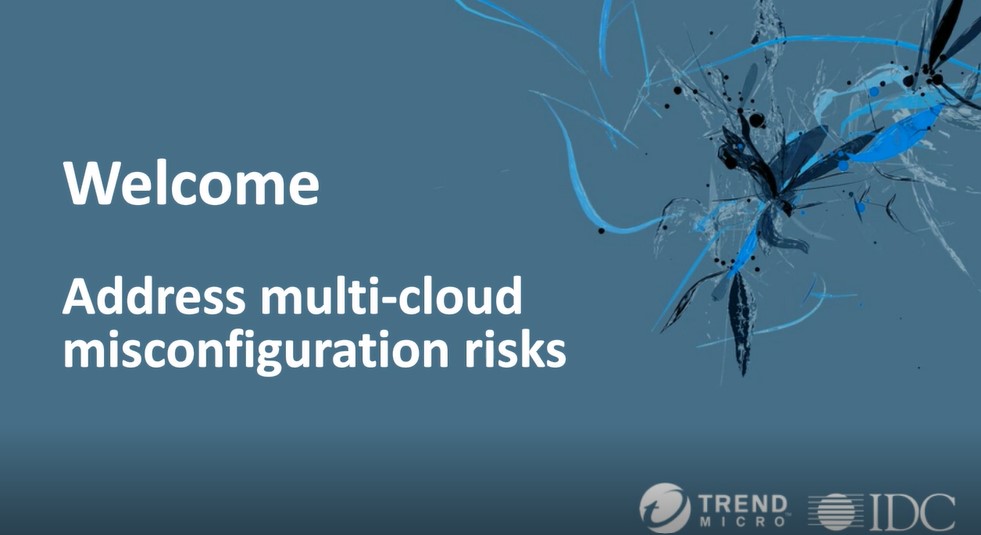Assessing your cloud strategy after COVID
Is the cloud still the perceived panacea that delivers cost reductions, efficiency gains and a platform for businesses to thrive post-COVID?


Around three-quarters (72%) of enterprises have moved one or more applications from the public cloud back on-premises, according to research from Virtana.
The top reasons for the change included the applications should not have been moved to a public cloud in the first place (41%), technical issues associated with public cloud provisioning (36%), degradation of performance (29%), and unexpected cloud costs (20%).
As the cloud has become a vital component of almost every business' IT infrastructure – especially since COVID-19 took hold – many enterprises that rushed their expansion of hosted applications are now re-evaluating how they create, manage and deploy cloud services.
Speaking to IT Pro on the publication of the report, Kash Shaikh, President and CEO of Virtana, explains how a cloud deployment should be handled. "Critical applications should never be rushed to the cloud,” he says. “There is really no reason to do it when there are partners and platforms that can help ensure applications will run smoothly in the public cloud and for the right cost.
Is the best cloud a small cloud? Signs that your cloud strategy is in need of a makeover Five obstacles holding back your hybrid cloud strategy
Creating a multi-cloud environment that can meet the challenges businesses face today and how their IT infrastructures will need to support their processes and remote staff in a post-COVID-19 landscape, is critical to get right.
Taking a step back and evaluating how cloud services are bought and integrating into a business should be a priority for all CTOs. After weathering the initial COVID storm, now is the time to closely audit how cloud services may have proliferated and how these can be rationalised moving forward.
Repatriating data
How applications and the data they rely upon are used is now very different than it was before remote mass working has become the norm. In its 2021 Hybrid Cloud Report, NTT encapsulates the current drivers behind the hybrid cloud, stating: “Business continuity, resilience, and agility are the priority business objectives.” The pandemic's practical impact is, in some cases, an underestimation of the network infrastructures needed to support the rapid changes enterprises had to cope with.
Get the ITPro daily newsletter
Sign up today and you will receive a free copy of our Future Focus 2025 report - the leading guidance on AI, cybersecurity and other IT challenges as per 700+ senior executives
The security of data at rest and in motion has never been more critical. Cloud services, by their nature, offer consumption-based flexible environments, yet the visibility of these services can be opaque in some instances. This lack of transparency can lead to a loss of control and low levels of security. As digital transformation continues, it is essential to increase visibility levels to ensure data security is robust.
How any given business uses data can be a practical guide when decisions have to be made whether more public cloud services are used. If large quantities of data will be in motion across several network endpoints, there is a case for moving it out of the public cloud.
RELATED RESOURCE

Address multi-cloud configuration risks
Cloud security challenges and how to overcome them
As the quantity of data businesses will have to manage expands thanks to IoT, for instance, focusing on the unique requirements this data needs to deliver efficient value will be the core guide to whether on-prem, public or hybrid cloud deployments will be required. It’s no surprise that this re-evaluation of cloud deployment had given rise to new services such as HPE Greenlake.
Tracy Woo, a senior analyst with Forrester, believes the HPE model could offer the secure flexible cloud services all businesses will need. "Most datacentre purchases are heterogeneous or under one brand, [products] like Greenlake offer folks a ‘capacity on demand’ model that is primarily a financing and contractual vehicle to enable incremental purchases. As hyperconverged systems gain traction, full-stack infrastructure solutions for compute, storage, and network become inseparable and are subject to subscription- or consumption-based pricing paving a future for businesses like Greenlake and also Dell’s Project Apex.”
A hybrid future?
Post-pandemic, it's clear more distributed resources will be used to support remote working and, critically, secure resources. Here the rush to expand cloud services to keep vital networks operating often meant securing these services was not a priority. Post-pandemic, this must change.
NTT found that 93% of organisations agree cloud is critical to meeting their immediate business needs, while 88% agree it’s also essential to meeting their future business needs. The hybrid cloud has become the foundation onto which these new services will be built. But the hybrid cloud must be thoroughly evaluated to ensure this structure can meet the needs of the workers using these systems.
As work has changed, so must the cloud services that support the networks business use today and will need in the near future. In the face of an increased desire to use data-intensive technologies such as machine learning, and continuing and expanding cyber threats, it's not surprising many IT professionals are evaluating whether the public cloud can deliver the performance and visibility they need at an affordable cost.
Some of the core reasons for data repatriation identified in IDC’s multi-cloud survey include security ( 25% of respondents) and performance (22% of respondents). Additionally, 12% of European organisations stated that their migration of business applications to the cloud was unsuccessful.
Carla Arend, senior program director for Cloud Research Europe at IDC, comments: "Cloud strategy and data strategy need to converge, and organisations need to have a good understanding of their data estate when crafting their cloud strategy. Data classification is critical to make sure which data can be moved to the cloud and which data should stay on-premises, for example for regulatory compliance purposes.”
No one is arguing for data and applications to move wholesale back on-prem. What is being highlighted, especially now that businesses have gained some perspective on their cloud deployments during the last year, is that a more strategic approach is needed to their cloud strategy.
Shaikh believes a more nuanced and integrated approach is needed. “Although IT applications can be strategic, business owners look for SaaS, PaaS, or even IaaS as options to reduce capital expense, labour, utilities, and accounting. They are in the business of selling products, not running data centres,” he says. “The reason why on-premises data centres will linger around is the time and investment to the critical infrastructure that runs the critical applications that are very difficult to uproot.”
No CTO can ignore the cloud. However, with a working landscape in flux and an expanding need to further embrace hosted applications, a new strategic approach is needed to ensure the cloud services created are fit for purpose.
The hybrid approach is still an option most businesses will choose. However, re-evaluating their application, data access and network needs, might just reveal new approaches to hosted services that could offer the cost-savings, security and efficiency gains needed for their business to thrive post-COVID-19.
David Howell is a freelance writer, journalist, broadcaster and content creator helping enterprises communicate.
Focussing on business and technology, he has a particular interest in how enterprises are using technology to connect with their customers using AI, VR and mobile innovation.
His work over the past 30 years has appeared in the national press and a diverse range of business and technology publications. You can follow David on LinkedIn.
-
 Bigger salaries, more burnout: Is the CISO role in crisis?
Bigger salaries, more burnout: Is the CISO role in crisis?In-depth CISOs are more stressed than ever before – but why is this and what can be done?
By Kate O'Flaherty Published
-
 Cheap cyber crime kits can be bought on the dark web for less than $25
Cheap cyber crime kits can be bought on the dark web for less than $25News Research from NordVPN shows phishing kits are now widely available on the dark web and via messaging apps like Telegram, and are often selling for less than $25.
By Emma Woollacott Published
-
 US government renews COVID-19 vaccine distribution agreement with Palantir
US government renews COVID-19 vaccine distribution agreement with PalantirNews Palantir will extend support for Tiberius for another year
By Praharsha Anand Published
-
 How COVID accelerated Kreston Reeves’ agile transformation
How COVID accelerated Kreston Reeves’ agile transformationCase Studies The pandemic has been a catalyst for hardware renewal, cloud migration, collaboration and much more
By Adam Shepherd Published
-
 A new age of collaboration tools
A new age of collaboration toolsIn-depth Businesses have always used collaboration tools, but have these been altered at all by COVID-19 lockdowns?
By David Howell Published
-
 How can the cloud industry adapt to a post-COVID world?
How can the cloud industry adapt to a post-COVID world?In-depth The coronavirus pandemic has fuelled rapid growth across the cloud industry, but it won’t last forever
By Keumars Afifi-Sabet Last updated
-
 The IT Pro Podcast: A post-COVID cloud future
The IT Pro Podcast: A post-COVID cloud futureIT Pro Podcast COVID has rewritten the rulebook for businesses - but will it last?
By IT Pro Published